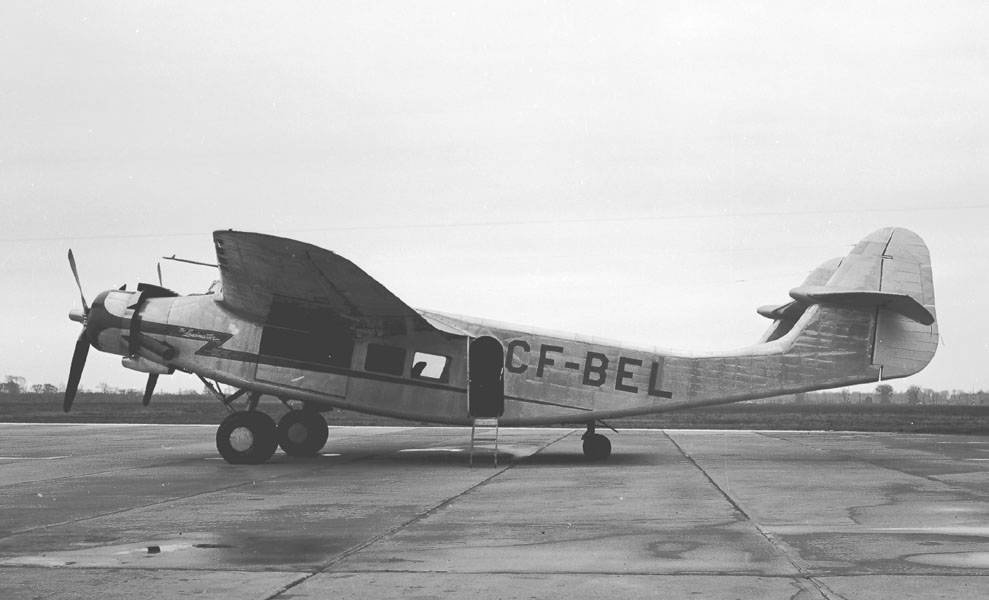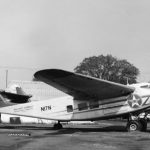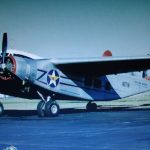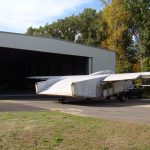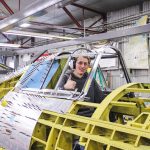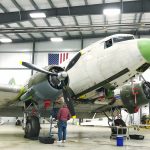As most readers will be aware, the New England Air Museum in Windsor Locks, Connecticut has one of the world’s finest collections of rare and unique aircraft. The museum has a near constant procession of fascinating projects going through their restoration shop, and one of these is the sole-surviving Burnelli CBY-3 Loadmaster, an unusual cargo design with a blended wing. We covered the history of Burnelli CBY-3 aircraft when it first moved into the museum’s workshop back in early 2014. In subsequent articles we have followed the restoration’s progress, and most recently published (with permission) an update from the project’s crew chief, Harry Newman, about where things stood back in mid-October 2018. Harry Newman recently posted a year end review of their work, and substantial progress has occurred in the interim. We thought you would enjoy reading and seeing what Harry Newman has documented about how far this his team has moved on this unique and important restoration project.
2018 Accomplishments
Several major milestones were reached during the 6th year of the CBY-3’s restoration. Most notably the major reconstruction of the damaged and corroded areas of the fuselage was completed along with the replacement of many of the underbelly skin panels. The entire fuselage was then progressively fine sanded and the initial primer coat of paint was applied.
Similarly, the repairs and preparation of the interior cargo bays, storage compartments and accessory bays was an enormous undertaking. Work began on the interior on day one of the restoration effort and countless hours were put into removing old paint, sanding, priming and finally finish painting the interior.
As components were removed from the aircraft – many months and even years earlier – they were restored and put into storage to await reinstallation at a future time. We have now reinstalled the majority of these parts and subassemblies, and several major assemblies such as the twin boom empennage and the engines have now been brought back into our restoration hangar as we begin to reassemble the aircraft.
Final assembly of all of the engine components was completed and the port side engine was mounted on the fuselage.
The internal lighting system was restored and installed and we now have active lighting in the cargo bays.
The cockpit and cargo bay windows all needed replacement, as well as their mountings and operating hardware. This year saw the completion of this work and the windows have been set aside for installation once final painting of the aircraft has taken place.
The rear landing gear was installed, with the exception of the tires, which will be installed after the finish painting of the fuselage.
Several of the control surfaces – ailerons, rudders and elevators – received new fabric coverings and were then painted and put into storage.
Ongoing Work
As mentioned in the September update, both engine stacks have been restored and assembled. However, when the CBY-3 was in active service a separate set of accessory cowlings spanned the gap between the fuselage firewalls and engine cowls. The accessory cowls had been custom made for the CBY-3 and were not with the aircraft when it was acquired by the museum. Replacements will have to be fabricated from scratch. In order to do this we needed to have an engine mounted on the aircraft to determine the proper measurements and contours of the new cowls. We have now mounted the port side engine on the aircraft and work has begun on the accessory cowl replacements.



One of the interesting features of the CBY-3 was how far forward the engines were mounted on the aircraft; 5 feet forward of the firewall and 3 feet forward of the cockpit nose. This presented us with a concern about where the longitudinal (lengthwise axis) center of gravity (CG) was on the aircraft in its current configuration with the wings and large tail section detached and the aft end of the fuselage elevated. If mounting the 2600 pound engine caused the CG to shift forward of the main landing gear the potential existed for the aircraft to “nose over” (a condition unique to “tail dragger” aircraft). Both lateral (side to side) and longitudinal CGs are important, but our primary concern was with the longitudinal balance, that is, the location of the CG along the lengthwise axis. The lateral CG is not a concern with the wide-body CBY-3 because the engines are mounted on the fuselage directly in line with the main landing gear rather than outboard on the wings so there is no risk of the aircraft tipping to the side with one engine installed.
In order to better understand this dynamic and to ensure the safety of our crew and the aircraft we decided to perform a weight and balance analysis of the fuselage prior to mounting the engine. This involved using Revere Electron Weighing Scales to precisely determine the weight at each of the three landing gear points. From these measurements we were able to calculate changes to the position of the longitudinal CG in various configurations for the fuselage; with no engines installed, one engine and two engines, as well as when we move the aircraft which involves raising the aft end. This analysis confirmed that it was safe to install one engine, but two engines cannot be installed prior to attaching the tail section and/or adding an appropriate amount of ballast at the aft end of the fuselage. (The dry, empty weight of the fuselage is 8373 pounds with no engines installed.)


Wheel Well Hydraulic Lines
One of our volunteers, Al Steinmetz, gained extensive experience while in the military in fabricating and maintaining aircraft hydraulic systems and has brought that skill to bear as he has taken on the task of making and installing many of the missing lines in the CBY-3’s wheel wells.

Exterior and Interior Painting
At the time of the previous update we had primed the lower portions of the fuselage and were preparing the upper surfaces for primer. The weather finally cooperated and we were able to complete the priming of the entire fuselage. We were also able to complete the finish two-tone painting of the interior cargo bays, as well as applying the initial coat of red finish paint on the twin boom tail section. With this work done we will now start to lay out the patterns for the finish painting of the fuselage exterior.











Many thanks to the New England Air Museum for this report, and to Harry Newman as well of course. It is exciting to see how well the Burnelli is moving forwards, and it will be great to see the last example of this innovative design on display in its completed form for the first time in more than half a century. For anyone wishing to know how they may contribute to this important project or to the museum itself, please click HERE to find out more.







